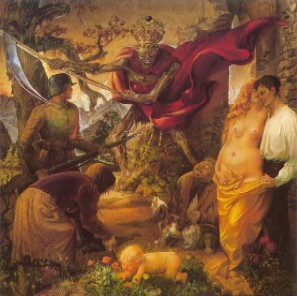 I'm starting a new thread on BeatCanvas about famous painters. Their work is interesting and I want to know more about them. I'm starting with Otto Dix, who was a German expressionist painter around the time of the two world wars and served in both - although the first time voluntarily and the second time involuntarily. I'm starting a new thread on BeatCanvas about famous painters. Their work is interesting and I want to know more about them. I'm starting with Otto Dix, who was a German expressionist painter around the time of the two world wars and served in both - although the first time voluntarily and the second time involuntarily.
He was seriously wounded several times. In 1917, his unit was transferred to the Eastern front until the end of hostilities with Russia. Dix was profoundly affected by the sights of the war. He would later tell about his recurring nightmare where he was crawling through destroyed houses. He produced a series of drawings and prints that reflected that traumatic period.In the Weimar Republic Dix studied at the Dresden Art Academy, became a founder of the Dresden Secession, and was a contributor to the Neue Sachlichkeit exhibition in Berlin in 1925. His paintings became his expression of the bleaker side of life, especially war. He used realistic pictures of disfigured soldiers as his model. When the Nazis came to power in Germany, they regarded Dix as a degenerate artist and had him sacked from his post as an art teacher at the Dresden Academy. He had this to say about painting portraits, which was how he made a living.You know, if one paints someone's portrait, one should not know him if possible. No knowledge! I do not want to know him at all, I only want to see what is there, on the outside. The inner follows by itself. It is mirrored in the visible. Here are a couple of samples of his work:  The paiting on the left is a portrait of a German dancer named Anita Berber. The painting on the right is The Triumph of Death. His most famous work is probably a series called "Metropolis." It depicted Germany's "Golden Twenties" post-WWI life and the contrasts therein - between the high society folks who had discovered American jazz and the homeless veterans and prostitutes.  Dix did a lot of etchings of very graphic and disturbing images from the war. There's some question as to whether these etchings constitute "art." I would say that the etchings constitute communication. And isn't that what art is supposed to be? Whether communicating an experience, a view, a feeling - something - art is communication. I think it's absurd to suggest that something may or may not be art. It may not sell, and therefore be commercial art, but it's still an expression of the artist - whatever they wanted to convey. |